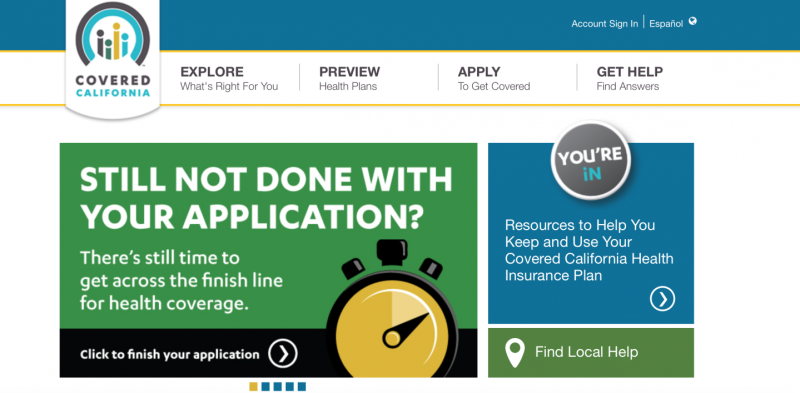The expected California premium increases are dwarfed by some of the rates proposed in other states. In Iowa, for example, the sole carrier remaining on the exchange — Medica — has proposed a 43 percent increase for next year, and it has said it would propose another increase of 12 to 20 percent on top of that if President Donald Trump decides to eliminate an important subsidy that helps some consumers reduce the cost of doctor visits, hospital stays and other medical services.
Blue Cross-Blue Shield of Georgia, the only insurer covering all counties in that state, is proposing a 40.6 percent increase, in large part because of the uncertainty surrounding these so-called cost-sharing subsidies.
Some states, however, will see more moderate rate hikes next year than in California. In Minnesota, which has been hit in the past with large increases, some consumers could see their premiums shrink by as much as 15 percent, while others could pay 11 percent more. In Pennsylvania, premiums on exchange-based plans are expected to rise by a relatively tame 9 percent on average if the cost-sharing subsidies continue, and by 20 percent if they don’t.
Covered California’s calculation of the average statewide premium increase assumes the federal government will continue to fund the subsidies — which may not be a safe assumption.
The exchange said there could be an additional charge averaging 12.4 percent on silver plans — the second-least-expensive type of policy among the exchange’s four tiers — if the administration under Trump decides not to continue funding them. The subsidies, paid directly to insurers, help reduce what some consumers pay out of their own pockets for medical expenses, such as physician visits, prescription drugs and hospital stays.
An announcement on whether the Trump administration will continue paying for them, at least for another month, was expected as early as this week. So far, Trump has let the subsidies continue on a month-to-month basis. But after Senate efforts to pass a repeal of the Affordable Care Act failed last week, he suggested in a tweet that he might pull the plug on them.
“We’ve prepared these rates in the midst of great uncertainty,” said Peter Lee, Covered California’s executive director. “We are doing our best to protect consumers. We hope to get clarity from the federal government before we make a decision by the end of August” on whether to tack on the silver plan surcharge to offset the loss of the federal subsidies, he said.
Lee said the exchange hoped not to do that, because “it will cause unnecessary confusion and ultimately cost the fed government billions of dollars more.”
Many Covered California consumers would not pay more out-of-pocket even if the cost of their health plans were to rise sharply, because the extra expense would be covered by federal tax credits intended to keep premiums affordable for consumers. Those subsidies, not directly threatened by Trump, are separate from the ones that help consumers with their out-of-pocket costs.
About 650,000 Covered California enrollees, or nearly half the exchange’s total enrollment, benefit from the cost-sharing reductions.
Those reduced rates are available only to Covered California enrollees who choose silver-level plans and whose annual income falls between 139 percent and 250 percent of the federal poverty level — about $34,200 to $61,500 for a family of four.
The exchange can’t wait too long before determining which rates consumers will face in 2018. State regulators need at least 60 days to review the rates, and Covered California and health plans also need to time to prepare for open enrollment, which begins Nov. 1.
Current enrollees will have the option to start renewing their plans sometime in October, said Covered California spokeswoman Lizelda Lopez.
Covered California also plans to create a new silver plan to be sold on the exchange for individuals and families who make too much money to qualify for tax credits and cost-sharing reductions. The surcharge will not be applied to that plan.
Covered California started offering plans in 2014. In the following two years, the agency successfully negotiated 4 percent average premium increases, far below the double-digit rate hikes that were the norm before the federal health law. That streak ended this year when rates shot up.
All of the rates are subject to state regulatory review and public comment. But neither of the state’s insurance regulators, the Department of Managed Health Care and Insurance Commissioner Dave Jones, has the authority to block the hikes.
The expansion of coverage under the Affordable Care Act has driven the percentage of uninsured Californians to a record low. The proportion of Californians lacking health insurance was 7.1 percent last year, down from 17 percent in 2013, before the coverage-expanding provisions of Obamacare began, federal data show.
The expansion of Medi-Cal, the state’s Medicaid program for lower-income residents, accounts for a significant part of that reduction. About 3.8 million Californians became eligible for Medi-Cal coverage under the Affordable Care Act. Total enrollment is 13.5 million, or about a third of the state’s population.
Chad Terhune contributed to this report.
